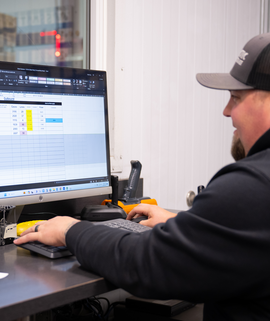Mastering Balance Sheets for Farm Planning Success
In the world of farming, success isn't just about great soil, weather conditions and crop yields. Equally important – if not more so – is the financial health of your farm. One of the most powerful tools for maintaining financial clarity and guiding decision-making is the balance sheet.

What is a Balance Sheet and Why Does it Matter?
A balance sheet provides a snapshot of your financial standing at a specific point in time, detailing what you own, what you owe and the relationship between the two. Ideally, this snapshot is captured the last day of the tax year, commonly Dec. 31 for many farm operations.
A balance sheet outlines:
- Assets: Everything the farm owns that holds value, including cash, grain, livestock, equipment and land.
- Liabilities: The debts and obligations the farm owes like accounts payable, outstanding loans and other financial commitments.
- Net Worth: The value of ownership or equity calculated by subtracting liabilities from assets.
|
Why Balance Sheets Are Crucial for Farm Management:
- Decision-Making: The balance sheet provides insights into your farm’s financial standing, enabling you to make informed decisions. Whether you're considering purchasing new equipment, applying for loans or expanding your operations, the balance sheet serves as the foundation for these choices.
- Financial Planning: With a clear view of your assets, liabilities and equity position, you can plan for both short- and long-term financial goals. A strong balance sheet allows you to set aside funds for capital improvements, emergency savings or future investments.
- Debt Management: Farms often operate with a combination of equity and debt. A balance sheet helps you understand your debt levels and keep debt at manageable levels for your operation.
- Tax Management: Farms often deal with complex tax obligations. A balance sheet provides a clear record of your assets and liabilities, which can help you prepare for tax season, minimize liabilities and maximize deductions.
How to Interpret Your Balance Sheet:
When you look at your balance sheet, consider the following:
- Working Capital: Understanding changes in working capital, calculated as current assets minus current liabilities, is crucial. Monitoring working capital fluctuations helps in making decisions regarding equipment and land purchases, interest expense management, strategic grain selling and maximizing your buying power.
- Debt-to-Equity Ratio: This ratio measures the balance between the farm’s debt and its equity. A higher ratio indicates more debt relative to equity, which could cause challenges for a farming operation as the farm economy fluctuates and margins narrow.
- Earned Equity Measurement: Consistent year-end balance sheets allow you to track earned net gain from year to year. This metric, calculated as year-end net worth minus beginning year net worth minus revaluation, gauges the increase in net worth annually. Keeping real estate values consistent avoids inflating net worth gains through appreciation, aiding in informed decision-making.
- Accrual Earnings: By crafting a year-end balance sheet aligned with your tax year, you can complete accrual earnings annually. Accrual earnings consider money earned but not yet received, adjusting for various factors at year-end. This provides a more accurate measure of profitability compared to tax earnings.
Build Financial Success on a Solid Foundation
Mastering your farm’s balance sheet is more than just a way to track financial data; it’s a tool that empowers you to make strategic decisions, manage risks and foster long-term success. By understanding and regularly reviewing your balance sheet, you gain invaluable insights into your farm’s financial health, which enables you to plan for the future, secure funding and stay on top of potential challenges. Financial clarity is the key to sustainable growth, and a solid balance sheet is the cornerstone.
Download a free balance sheet template and get started today. And don’t forget to speak with your Compeer financial officer if you have questions or want to discuss moves for the coming year.